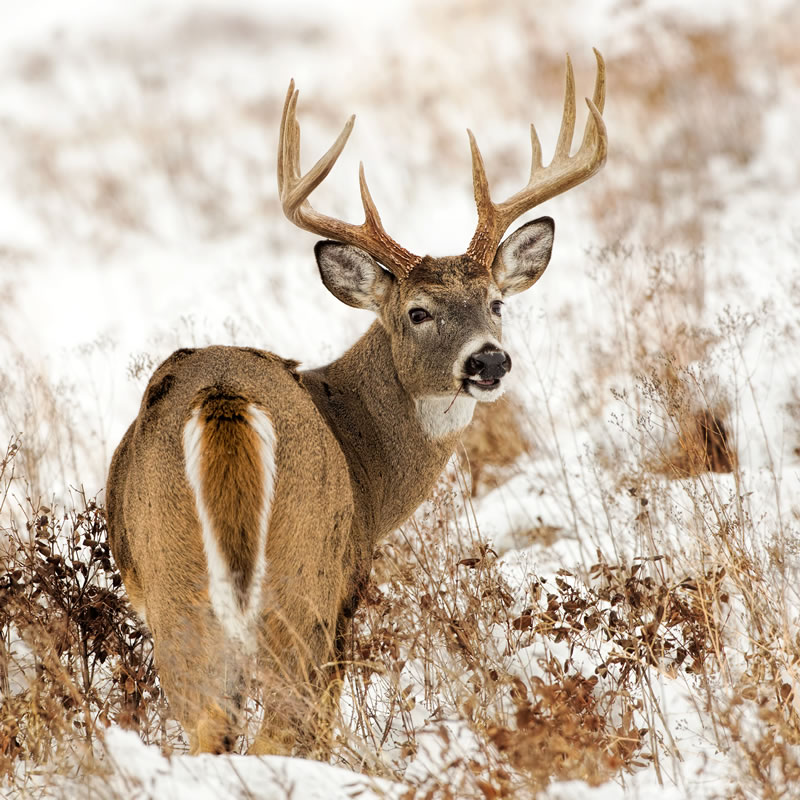
Scientific Name
Odocoileus virginianus
Classification
| Kingdom | Animalia |
| Phylum | Chordata |
| Class | Mammalia |
| Order | Artiodactyla |
| Family | Cervidae |
| Genus | Odocoileus |
| Species | virginianus |
IUCN Redlist Status

Location
White-tailed deer have a wide range across various parts of North America. They can be found in southern Canadian provinces such as Alberta, Saskatchewan and British Columbia. White-tailed deer are also found throughout most of the United States except for the most western states of California, Utah, Nevada, as well as Alaska. They are found in Mexico, Central America and even northern parts of South America. Recently, white-tailed deer have been introduced to Scandinavia.
Habitat
The habitat of the white-tailed deer is most often the temperate deciduous forests of the United States and southern Canada. However, the deer has great adaptability to various habitats and can be found in the sage or desert-like regions of Texas, Mexico and Arizona. They can even be found in the tropical forests of Central and South America.
Diet
White-tailed deer eat a variety of vegetation including leaves, grasses, buds, berries, fruits, and acorns. The deer may be considered a pest by farmers as it can destroy their crops.
Size
Their size will vary on the sub-species and location. Typically, males are larger than females. Males can weigh from 150 to over 300 pounds. Females can weigh from 80 to over 200 pounds. They will stand between 3 - 3.5 feet at the shoulder.
Description
Their coat color changes as the seasons change. In the winter their coat is a greyish-brown color. During the spring months, they shed their thicker winter coat and sport a reddish-brown coat with short, stiff hairs.
The underside of their tails are white. When a deer senses danger, they raise their tails to show the white underside. This alerts other deer around them that danger may be near.
Males begin growing antlers during the early years of their life. Each year in the spring, white-tailed deer grow new sets of antlers. Deer antlers are actual bone growing from their skulls, and have a layer of velvet on them which consists of small furs, skin and blood vessels. They continue to grow during the summer and fall months. Antler size varies from deer to deer each year. In the fall months, white-tailed deer shed the velvet from their antlers. In the later winter months, the males lose their antlers and begin growing a new set again in the spring.
Reproduction
During the fall months, white-tailed deer begin a period called the "rut". During the rut, males scrape bark off of trees or on the ground with their antlers and leave their scent for females with urine. This lets females know that a male deer is in the area. This activity also alerts other males that a male is in the area. Males fight each other over females by using their antlers.
Males will usually try to mate with as many females as possible. After mating, a female will have a gestation period of roughly 6.5 to 7 months. The female will then give birth to 1 to 3 fawns in the spring.
